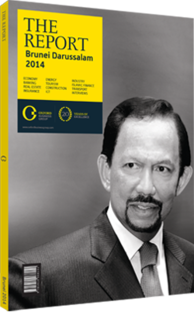An evolving plan to meet demand for public housing
The traditional settlement patterns of Brunei Darussalam looked markedly different 60 years ago, when the vast majority of its citizens resided in water villages built on stilts along the banks of the Brunei River, than they do today in modern Bandar Seri Begawan. When cholera and smallpox epidemics swept through the crowded settlement of Kampong Ayer in 1953, the government was prompted to initiate the Sultanate’s first public resettlement programme, moving its citizens to the dryer and less disease-prone mainland. Under this resettlement scheme, each of the relocated families was granted an 0.8-ha plot on which to build a house and was also encouraged to take up agriculture as a new source of income.
Evolving Plan
This settlement programme later evolved in the 1960s away from a focus on agricultural and towards home provision, as the size of the granted land shrunk to 0.2 ha. The state also began to provide other infrastructure in these communities, like shops, schools, community halls and mosques. More than 60 years on, the resettlement scheme has now evolved into the National Housing Scheme (NHS) administered by the Housing Development Department (HDD), which was created from its predecessor, the Department of Resettlement, in 1984.
Over the past four decades the budget allocation within Brunei Darussalam’s five-year National Development Plans (NDP) dedicated to public housing has more than doubled, increasing from BN$550m ($432m) to BN$1.14bn ($895m). Between 1970 and 2012, the NHS built more than 18,000 houses, which has enabled more than half of the populace eligible for public housing to occupy and own a house, according to the NHS. As the ranks of eligible citizens have increased in recent years, so too has the pace of construction. More than 40% of all public housing units – 7300 in all — were delivered in 2007-12, with public housing making up 40% of Brunei Darussalam’s total residential market, according to the NHS. By the end of 2014, another 8600 houses are projected to be delivered, pushing this figure to half the national housing stock. In all, the 10th NDP of 2013-17 is targeting the construction of approximately 10,000 homes and more than 1400 land lots (each lot 0.05 ha) in seven new residential areas over a five-year span.
Eligibility
Bruneians must meet a specific set of criteria to be eligible for the NHS. These applicants must: hold Bruneian citizenship; be 18 years of age at the date of application date; not own any alienated land or residential property; have a monthly income between BN$445 ($350) and BN$$3030 ($2380); and have not previously disposed off any private land or private residential property. The housing needs for those earning less than BN$445 ($350) per month are addressed through alternate low income housing schemes administered by the Prime Minister’s Office and the Ministry of Culture Youth and Sports, as well as those provided by non-governmental organisations, including the Sultan Haji Hassanal Bolkiah Foundation and Majlis Ugama Islam of Brunei. Due to the popularity of this scheme, only around 40% of eligible applicants were housed at the end of 2012, a figure expected to reach 60% by the end of 2014 with completion of several new large-scale developments.
In Demand
Due to high demand, urban growth and other socioeconomic factors, the structure of the housing units provided has evolved to become more densely populated. Where a one-family home was initially envisioned for a 0.8-ha plot, the new housing scheme was reduced to 0.05 ha per home, as well as use of semi-detached and terraced houses.
Rather than an outright hand-out by the government, these houses are purchased (albeit at a steep discount) by their new owners, who are also assisted with favourable financing terms including low or zero interest rates and long pay-back durations. Depending on the income group, a house owner pays on average about 70% of the housing development costs excluding earthwork and infrastructure costs (which make up roughly 40% of the total development costs).
You have reached the limit of premium articles you can view for free.
Choose from the options below to purchase print or digital editions of our Reports. You can also purchase a website subscription giving you unlimited access to all of our Reports online for 12 months.
If you have already purchased this Report or have a website subscription, please login to continue.

